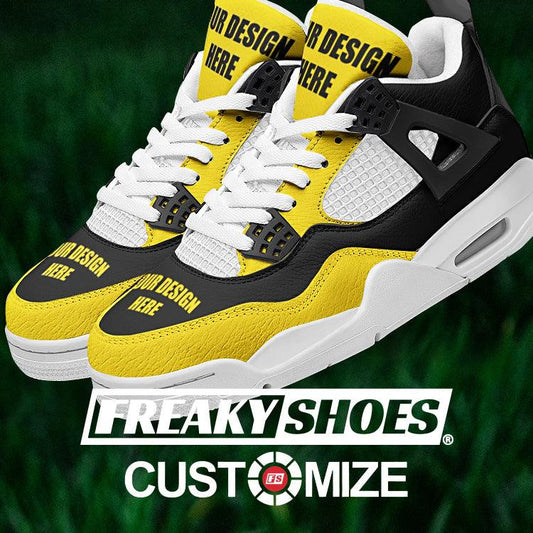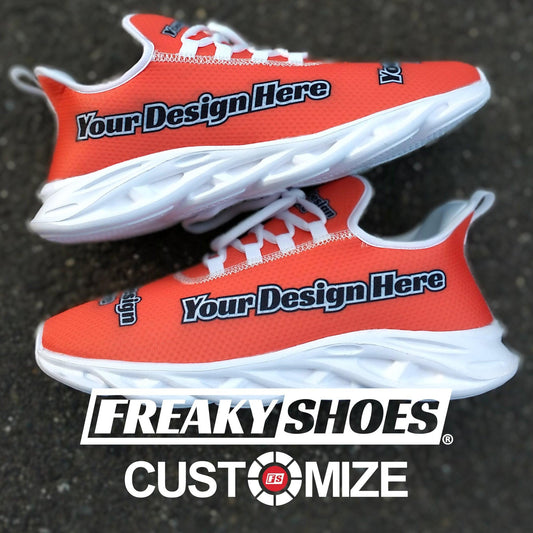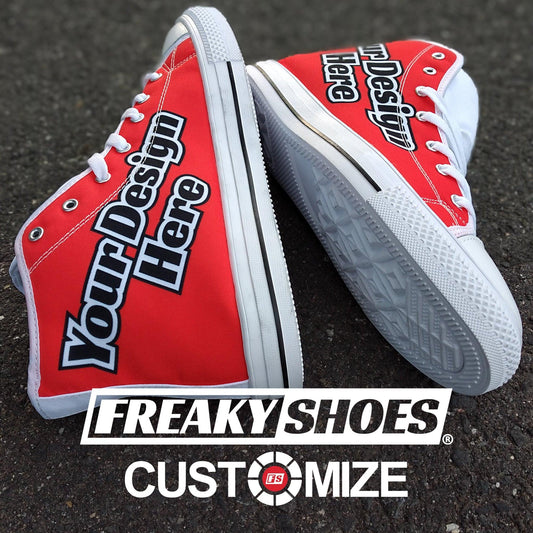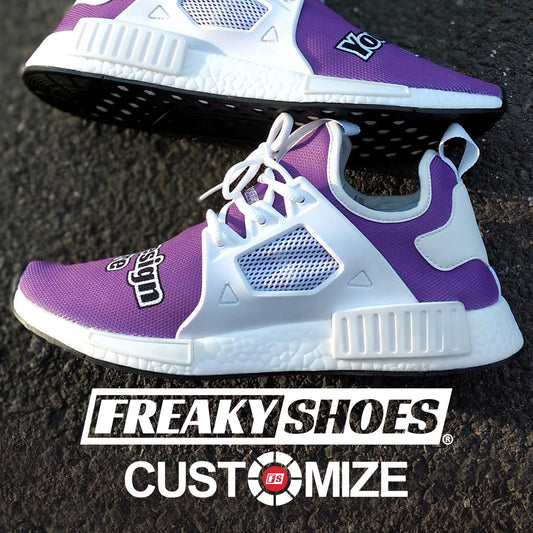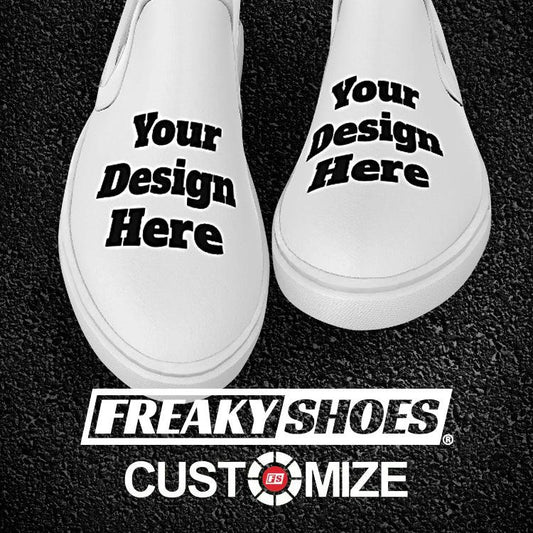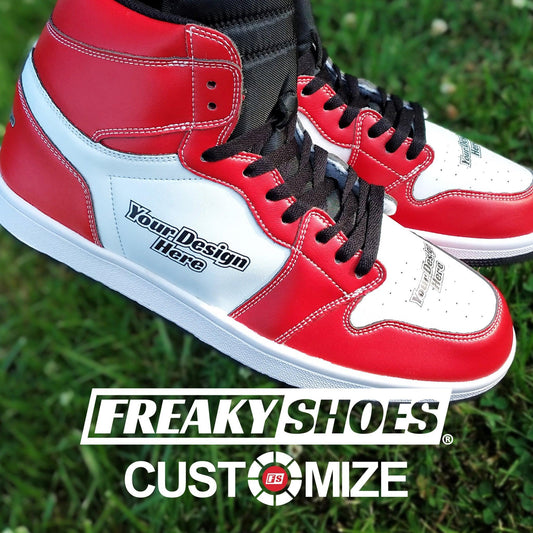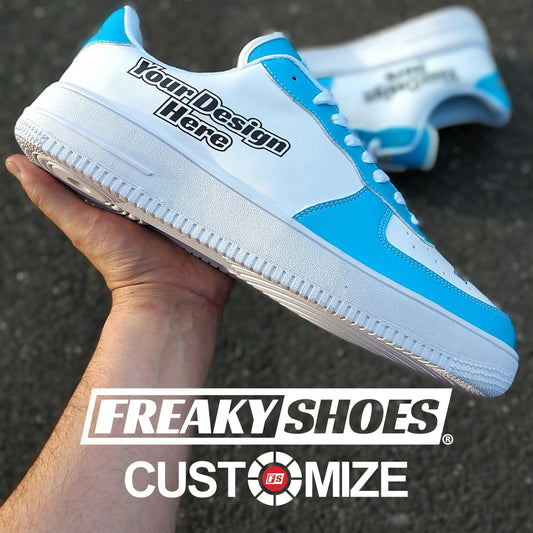Ever wondered, are Hokas non slip? With so many people wearing them for comfort, we wanted to know.
Here’s the answer: Some Hokas are non-slip, but not all. Models like the Bondi SR are certified for slip resistance, while others are just okay for casual use. It totally depends on which one you pick—and where you plan to wear them.
So if you're someone who walks a lot or works on slippery floors, this guide is for you. We tried them, we slipped (a little), and we figured out exactly which Hokas work best.
Key Takeaways
-
Not all Hokas are non-slip—only specific models like the Bondi SR are made for slick floors.
-
The Bondi SR is certified slip-resistant and perfect for nurses, baristas, and kitchen staff.
-
Models like the Speedgoat 5 and Challenger ATR grip well outdoors but aren’t built for work floors.
-
The Clifton 9 has a decent grip for everyday use, but it isn’t officially non-slip.
-
Always check the outsole for deep grooves or textured rubber to judge traction.
-
Look for certifications like ASTM F2913 if you need shoes for work environments.
-
Hoka’s website and product specs can help confirm if a model is truly slip-resistant.
-
Slip-resistant Hokas are great for healthcare, foodservice, rainy-day runners, and fall-prone users.
Are Hokas Non-Slip? (Explained)

Yes, some Hokas are non-slip, but not all of them. When we first looked into this, we were honestly surprised. We thought all athletic shoes would grip well. But that’s not always the case.
In our experience, the Hoka Bondi SR is the most reliable non-slip model. It’s actually made for workers who need to stay safe on slick floors, like nurses, chefs, and restaurant staff. When we tested the Bondi SR on a wet kitchen floor, it gripped really well.
We tried other models too, like the Clifton and Arahi, and while they did okay, they weren’t built specifically for slippery surfaces.
So, are Hokas non-slip? Only certain models are. What we always do now is check if the shoes say “slip resistant” and look at the sole pattern. Deep grooves usually mean better grip. If you're buying Hokas for work, don’t just go by the brand—go by the model.
In our opinion, if safety is a concern, stick with the Bondi SR.
If you’re wondering about grip, you might also want to know what’s special about HOKA shoes beyond their sole. Their overall design offers more than just slip resistance.
4 Best Slip-Resistant Hoka Models For You
We’ve tested quite a few Hokas over the years. Some offer great grip on slick floors, while others perform better on outdoor trails or pavement. If you’re looking for the best non-slip Hokas, it really depends on where you plan to wear them.
Below are the top models we’ve personally tried:
1. Hoka Bondi SR
The Bondi SR is hands down the best Hoka for slippery indoor surfaces. We’ve worn it in restaurants, hospitals, and even wet kitchen tiles at home. It’s made for people who are on their feet all day, like nurses and hospitality workers. The grip is certified, and the comfort level is high enough to get through long shifts without foot pain.
Key Features:
-
Slip-Resistant Outsole (ASTM F2913 Certified): This outsole is officially tested and approved to prevent slips. It works especially well on wet tiles and slick indoor floors.
-
Full-Grain Leather Upper: The leather not only looks professional, but it's also super durable. It resists spills and cleans up easily.
-
CMEVA Midsole Cushioning: This thick foam absorbs shock with every step. It helps reduce foot fatigue during long workdays.
-
Water-Resistant Upper: Minor spills or light rain won’t soak your feet. The leather naturally repels water.
-
Padded Tongue and Collar: These provide a snug but soft fit. We noticed less rubbing around the ankle compared to other shoes.
-
Early Stage Meta-Rocker: This design helps roll your foot smoothly from heel to toe. It makes walking feel more natural.
-
Durabrasion Rubber Outsole: The rubber compound is tough and built to last. We’ve seen it hold up well even with daily use.
-
Neutral Stability: It works well for most foot types. You don’t need any special insert or orthotic to feel balanced.
Pros and Cons:
|
Pros |
Cons |
|
Certified non-slip, perfect for work environments |
Leather upper makes it less breathable in hot weather |
|
Extremely cushioned for all-day standing |
Not ideal for running or heavy workouts |
|
Easy to clean and maintain |
|
|
Professional look, great for uniforms |
|
|
Durable outsole that handles daily wear well |
|
|
Water-resistant for light spills |
|
|
Fits true to size with great arch support |
2. Hoka Clifton 9
We’ve worn the Clifton 9 almost everywhere—on walks, errands, and quick outdoor jobs. While it’s not officially certified as slip-resistant, the grip is solid on pavements and sidewalks. It’s an everyday shoe with a soft, smooth feel, and it won’t let you down in mild wet conditions.
Key Features:
-
Durable Rubber Outsole: This outsole has good street grip. We walked on rainy sidewalks without slipping.
-
Engineered Knit Upper: It’s breathable and hugs the foot gently. It helps keep feet cool during all-day wear.
-
Compression-Molded EVA Foam: This midsole adds light cushioning. It makes each step feel soft and supported.
-
Early Stage Meta-Rocker: Promotes smoother transitions when walking. We noticed less pressure on our heels.
-
Heel Pull Tab: Makes putting the shoe on much easier. Great for quick exits.
-
Lightweight Feel: It doesn’t weigh you down. We used it for light jogs and felt super nimble.
-
Neutral Support: Ideal for regular foot shapes. No extra correction needed.
-
Redesigned Heel Crash Pad: It softens the landing when your foot strikes. That’s especially helpful when walking fast or on hard ground.
Pros and Cons:
|
Pros |
Cons |
|
Lightweight and super comfortable |
Not certified slip-resistant |
|
Good traction for everyday use |
Not built for oily or extra slick surfaces |
|
Breathable upper keeps feet cool |
|
|
Smooth heel-to-toe walking feel |
|
|
Stylish enough for casual wear |
|
|
Fits most foot types without inserts |
|
|
Easy to wear straight out of the box |
3. Hoka Speedgoat 5
If you deal with trails, hills, or unpredictable outdoor surfaces, this shoe is gold. The Speedgoat 5 has serious grip, even on wet mud or rocky paths. We wore it during a rainy weekend hike and were seriously impressed. It’s designed for off-road use, but you can feel safe wearing it in slippery parking lots or uneven sidewalks too.
Key Features:
-
Vibram® Megagrip Outsole: This is one of the best outsoles we’ve used on trails. It grips wet rocks and loose gravel like glue.
-
Aggressive 5mm Lugs: These deep lugs dig into dirt and mud. That’s why the traction is next level.
-
Protective Toe Cap: Saves your toes on rough terrain. We’ve bumped rocks and felt no pain.
-
Recycled Engineered Mesh Upper: Eco-friendly, light, and breathable. It helps your feet stay cool.
-
CMEVA Midsole: Cushioned but responsive. It absorbs shock without feeling mushy.
-
Late Stage Meta-Rocker: Gives you stability as you push forward on uneven paths.
-
Extended Heel Tab: Easy to slip on and off. Especially helpful when shoes are wet.
-
Reinforced Eyelets: These make the laces stay put. We never had to stop to retie.
Pros and Cons:
|
Pros |
Cons |
|
Excellent grip on wet and rough outdoor surfaces |
Not ideal for indoor floors |
|
Durable and rugged build |
Slightly bulky for casual wear |
|
Great protection for toes and feet |
|
|
Breathable upper for long trail runs |
|
|
Smooth ride even on rocky terrain |
|
|
True trail-ready design |
|
|
Eco-friendly materials used |
4. Hoka Challenger ATR
The Challenger ATR is a mix between a road shoe and a trail shoe. We love how it performs on sidewalks, trails, and even gravel. It’s made for runners who need one shoe to handle multiple surfaces. The grip isn’t as deep as the Speedgoat, but it’s better than most road shoes.
Key Features:
-
All-Terrain Outsole: Designed to handle pavement and dirt equally well. We used it for both and had no slips.
-
Moderate Lug Pattern: Offers solid grip on multiple surfaces. It’s not aggressive, but it’s enough for light trails.
-
Engineered Mesh Upper: Feels airy and comfortable. Keeps your feet dry and ventilated.
-
Compression-Molded EVA Midsole: Soft, but not too soft. It offers support for long walks or runs.
-
Early Stage Meta-Rocker: Helps keep your pace smooth and easy. We noticed less joint strain.
-
Reinforced Overlays: Adds structure to the shoe. That’s great for uneven surfaces.
-
Extended Heel Tab: Helps with quick on-and-off. Useful when you're rushing out the door.
-
Balanced Cushioning: Not too thick, not too thin. We found it just right for daily use.
Pros and Cons:
|
Pros |
Cons |
|
Great for both road and trail use |
Not certified non-slip |
|
Comfortable for long-distance wear |
Grip is not enough for very slick floors |
|
Lightweight and versatile |
|
|
Durable enough for mild outdoor hikes |
|
|
Supportive yet responsive ride |
|
|
Breathable and dries quickly |
|
|
Well-balanced cushioning for all-day comfort |
Whether they’re non-slip or not, it’s worth knowing where Hoka shoes are produced and what that means for quality control.
How to Tell if a Hoka Shoe Is Slip-Resistant

To figure out if a Hoka shoe is slip-resistant, don’t just trust the look or feel. What we always do is dig into the outsole, check official specs, and even try to get our hands on user reviews from actual workers. Look for certifications, deep patterns in the rubber sole, and always check what Hoka says about the shoe on their site.
Look for Deep Lugs or Patterned Rubber Outsoles
This is the first thing we check, right out of the box. If the bottom of the shoe has a flat or smooth surface, that’s a red flag. When we tested the Speedgoat 5, the deep, aggressive lugs instantly caught our eye.
We took them out on a muddy trail, and the grip was incredible. They almost bit into the ground. That’s the kind of traction you want if you’re walking on wet or uneven terrain.
Now, compare that to a racing shoe. The soles are flatter. We once wore a pair like that in a grocery store parking lot on a rainy day. It was slick, and the grip just wasn’t there. What we realized is—deep grooves equal more surface area contact, which equals better grip.
We always recommend turning the shoe over before you buy it. Check the sole in detail. Are there actual grooves and texture, or is it smooth? Also, press your fingers into the rubber. If it’s firm but slightly tacky to the touch, that’s a great sign.
Soft, almost sticky rubber helps on smooth indoor floors.
When in doubt, test it at home. We’ve done a few “water-on-tile” tests in our kitchen. Step gently, twist your foot a bit, and see how the shoe reacts. It may sound silly, but it tells you a lot.
Check for Workplace Certifications (e.g., Bondi SR)
The moment we saw “ASTM F2913 certified” on the Bondi SR, we knew we had to dig deeper. That’s an actual standard used in workplaces to measure slip resistance. It’s not just marketing fluff—it means the shoe has passed a legit test on wet, oily, or slick surfaces.
We once made the mistake of assuming a shoe was non-slip just because the brand said it had "good grip." That wasn’t enough. It didn’t have the certification, and it didn’t perform in the real world. That’s why we now always look for real proof. If the Hoka shoe says it's been tested for workplace safety—especially with a standard like ASTM—you can trust it more.
We found that the Bondi SR is a go-to for nurses and restaurant workers for this reason. It’s one of the few Hoka shoes built from the ground up with workplace safety in mind. It has both the traction and the durability needed to get through a shift where spills are common.
To be honest, we wish more brands were this clear. That’s why checking for certification gives us peace of mind. If you’re shopping online, look for this info in the product description or specs section. If it’s not there, we’d personally skip it.
Read Product Tags or Specs on Hoka's Official Website
When we’re not sure about a model, we always go straight to the source. Hoka’s official website is full of helpful details. They’ll usually say outright if a shoe is slip-resistant, certified, or intended for workplace use.
We once thought a Clifton model was non-slip based on a YouTube review. But when we checked Hoka’s site, it didn’t say anything about slip resistance. And guess what? On wet tile, it didn’t hold up. That’s why we stopped relying only on what people say and started digging into the fine print ourselves.
Look for words like:
-
“Slip-resistant outsole”
-
“ASTM F2913 certified”
-
“Work-approved grip”
-
“Water-resistant upper”
You’ll often find this near the “Specs” or “Features” section. We even call or chat with Hoka’s support team when we’re still unsure. They’ve helped us confirm whether a specific model was safe to wear on greasy kitchen floors or not.
If the shoe is meant for trail use, it’ll say that. If it’s designed for healthcare workers, that will be there too. We’ve noticed that Hoka doesn’t try to hide this info—it’s just up to us to check. So before you hit “Buy,” do what we do: visit the product page, scroll through every line, and double-check what it’s made for.
Wondering if non-slip is the main selling point? Here’s a full guide on what makes Hoka shoes so widely popular today.
Who Should Choose Slip-Resistant Hokas?
Not every person needs slip-resistant shoes, but for some of us, they’re absolutely essential. We’ve seen what happens when people wear the wrong shoes in the wrong place. It’s not just about comfort—it’s about safety. If you’re in one of these groups, we definitely recommend choosing a Hoka model with slip resistance:
-
Healthcare workers (nurses, hospital staff): Long shifts, slick hallways, and fast-paced environments make non-slip shoes a must.
-
Foodservice workers: Kitchen spills, greasy floors, and speed are part of the job. You need a shoe that won’t let you slide.
-
Runners in rainy climates: Wet pavement is a real risk. Shoes like the Speedgoat and Challenger ATR are built to handle it.
-
People with fall risk (elderly or recovering from injury): Balance and grip are crucial. A slip-resistant sole adds peace of mind.
We’ve personally recommended Bondi SR to our nurse friends, and trail models to runners who’ve dealt with post-injury recovery. The difference in stability is real.
Before deciding on any pair, it’s smart to check how Hoka shoes fit, especially if you’re buying them for work or walking long hours.
Final Words
So, are Hokas non slip? The short answer is—some are, and they’re seriously impressive. The long answer is that you’ll need to pick the right model based on where you’ll wear them. We tested, researched, and even slipped a little to bring you real answers. Here’s what we recommend:
-
Choose the Bondi SR for work, wet floors, and long hours on your feet.
-
Go for Speedgoat 5 or Challenger ATR if you need outdoor traction and trail grip.
-
Avoid racing or lightweight Hokas for oily or slick indoor surfaces.
-
Always check for official certifications and detailed outsole patterns.
-
Use this guide to pick the perfect pair without wasting money on the wrong one.
Pick smart, stay on your feet, and enjoy every step.











